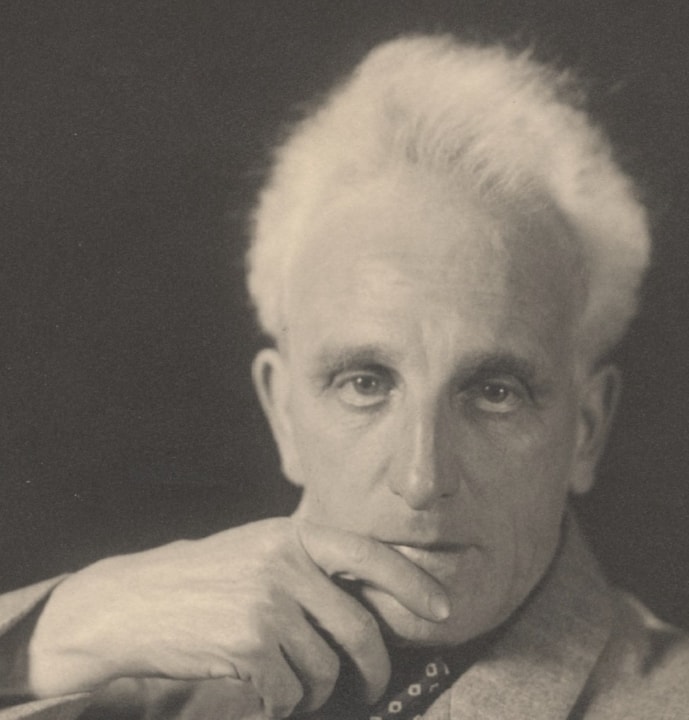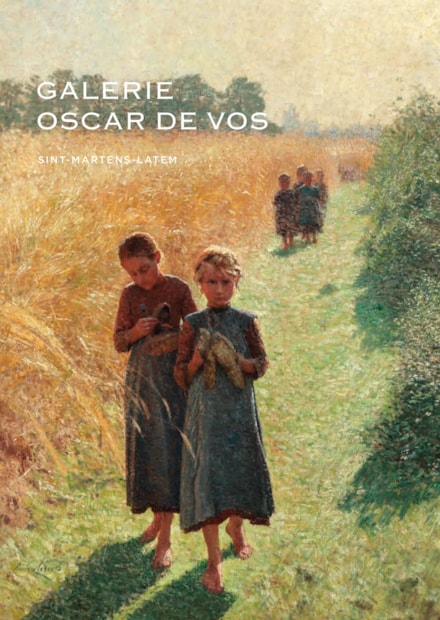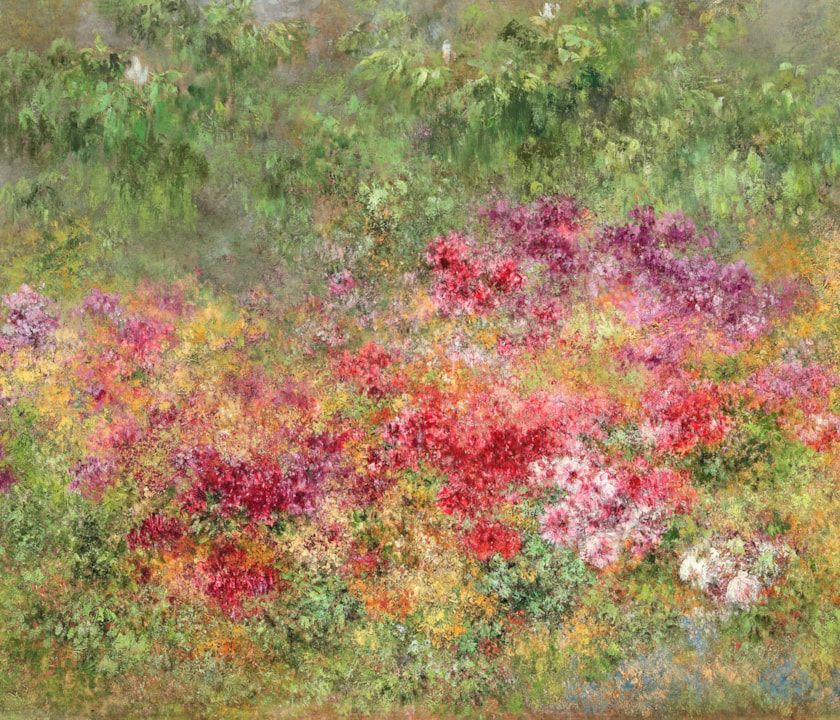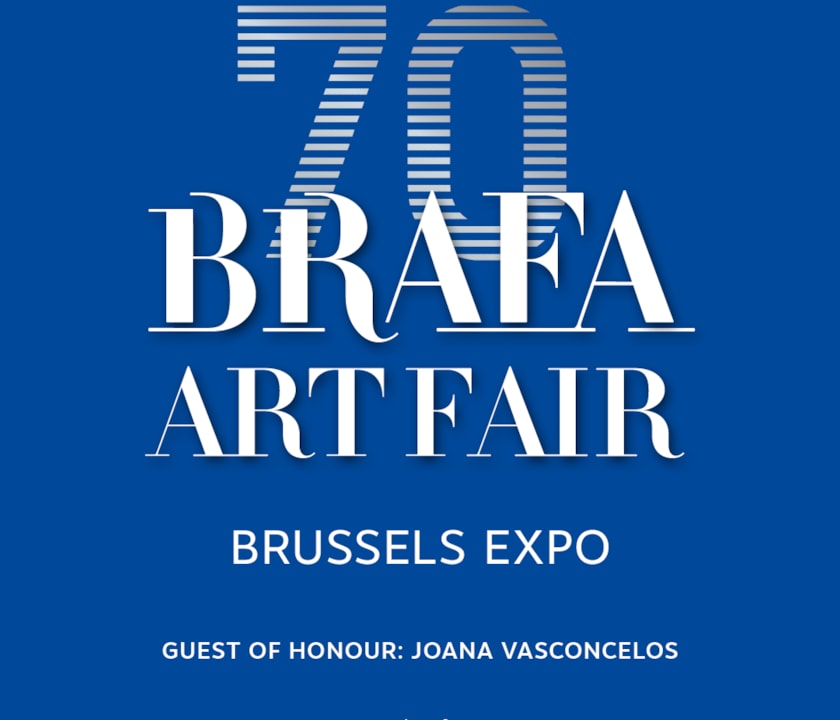Léon De Smet
(1881 - 1966)

Léon De Smet
(1881 - 1966)
Als zoon van een fotograaf, toneelschrijver en sierschilder werd Leon De Smet in 1881 geboren. Vanaf 1893 vatte Leon een briljante studie aan de plaatselijke Academie voor Schone Kunsten aan. Vanaf 1902 deelde hij met o.m. Robert Aerens, Frits van den Berghe en Albert Servaes een atelier aan de Gentse Rasphuisstraat. Een jaar eerder was hij gedebuteerd op de Antwerpse salon; zijn carrière lang zou hij aan deze driejaarlijkse tentoonstellingen deelnemen, afwisselend ingericht te Antwerpen, Brussel en Gent. Ook in de plaatselijke Cercle Artistique et Littéraire betoonde hij zich bijzonder actief. Reeds in april 1904 verzorgde hij er samen met Maurice Sys een dubbeltentoonstelling; zes jaar later hield de luminist Edmond Verstraeten er hem gezelschap. Kort na zijn huwelijk in 1905 trok hij met zijn vriend Modest Huys naar Frankrijk.
Hoewel hij de streek via zijn broer reeds eerder kende, trok hij pas in 1906 eerst naar Deurle, naderhand naar Sint-Martens-Latem, waar hij tot november 1913 verbleef. In Latem vond hij naast zijn broer Gustave, ook de andere leden van de tweede groep terug: Maurice Sys, Constant Permeke en Frits Van den Berghe. Vooral de band met Sys dient te worden onderstreept, daar Sys zoals Leon De Smet zijn leven lang het impressionisme zou blijven verdedigen. Anderzijds stond de kunstenaar ook op goede voet met de criticus en latere galeriehouder Paul-Gustave van Hecke, van wie hij in 1911 een portret tekende in houtskool. Nog in 1911 nam hij samen met Gustave De Smet, Permeke en Gustave van de Woestyne aan de tentoonstelling van Kunst van Heden deel. Met Sys nam hij in 1913 ook deel aan de affichewedstrijd voor het plakkaat van de Gentse Wereldtentoonstelling; de kunstenaar behaalde prompt de eerste prijs.
Bij het begin van de Eerste Wereldoorlog vluchtte De Smet naar Groot-Brittannië. In eerste instantie verbleef hij in Devonshire. Reeds in 1915 vinden we hem in Londen, waar hij al snel invloedrijke culturele figuren onder zijn vrienden kon rekenen, zoals de schrijvers Joseph Conrad, John Galsworthy, Bernard Shaw; ook met Frank Brangwyn stond hij op goed voet, een kunstenaar die voor tal van Belgische ballingen (waaronder Edgar Gevaert) een grote hulp betekende. De Smet betrok aan St John’s Wood een ruim atelier, in het midden van het kunstenaarskwartier. Daarnaast ontmoette hij in de bij kunstenaars populaire cafés avant-gardisten zoals Jacob Epstein en Ossip Zadkine. Stilaan ontpopte hij zich tot een graag gezien societyfiguur. Zoals Hippolyte Daeye en Van de Woestyne kon ook De Smet rekenen op de steun van het echtpaar De Graaff-Bachiene, die zich in Londen het lot van de Belgische kunstenaars in ballingschap aantrok. In januari 1917 volgde een eerste Londense triomf met een opgemerkte individuele tentoonstelling in de Leicester Gallery.
Aan het onbezorgde Londense bestaan kwam een eind toen hij eind 1917 alsnog onder de wapens werd geroepen. Maar de voortreffelijke portretschilder wist het lot naar zijn hand te zetten, en schilderde vooral de portretten van zijn superieuren. Zijn verblijf in Normandië, als hulpje bij de medische dienst. Na de Wapenstilstand trok hij opnieuw naar Londen en vervoegde zijn familie in South Kensington; De Smet zou het huis tot 1925 als zijn Londense pied-à-terre behouden.
Het Belgische publiek kon pas in april 1920 uitgebreid kennis maken met De Smets oorlogswerk. Zijn tentoonstelling in de gerenommeerde Brusselse Galerie Georges Giroux, kende grote weerklank. Op het einde van het jaar trok hij naar Parijs, waar hij tot het voorjaar van 1921 verbleef.
Ondertussen was in het Brusselse de Sélection-beweging tot stand gekomen. Vreemd genoeg stond de uitgesproken modernistische beweging, die zich diametraal tegenover de impressionistische virtuositeit van Leon De Smet bevond, een samenwerking niet in de weg. Vanzelfsprekend maakten de vriendschappelijke banden tussen De Ridder en Van Hecke enerzijds en De Smet anderzijds, deze vertrouwensband mogelijk. In 1921 was hij zelfs in de galerie te gast.
Voorlopig behield Londen de grootste aantrekkingskracht op de kunstenaar. Meer dan op het Europese vasteland kon hij het Londense publiek van zijn werk overtuigen. Vooraanstaande kranten als The Observer, The Globe en The Daily Mirror bespraken deze tentoonstelling vol lof. Een jaar later kende zijn individuele tentoonstelling bij de Leicester Galleries eenzelfde succes.
Dit succes ten spijt richtte De Smet zich vanaf 1925 volledig op België. In de loop van 1926 huurde hij een atelier in hetzelfde gebouw als de Galerie Le Centaure, die het volgende jaar een tentoonstelling aan wijn werk wijdde. Maar deze Brusselse jaren brachten weinig soelaas. Pas wanneer hij zich in 1930 opnieuw in Deurle vestigde, hervond zijn schilderkunstig talent zijn weg. Aan de Pontstraat bewoonde hij het tuinhuis van Hotel Saint-Christophe.
Vanaf 1932 betoonde de kunstenaar zich actief in de groep ‘Vlaanderen’, die de Belgische contemporaine kunst in volle crisistijd trachtte te ondersteunen. In de vereniging,waarvan ook Gustave De Smet lid was, vond hij verder oude vrienden terug, zoals Jozef Cantré, Valerius De Saedeleer, Jules De Sutter, Hubert Malfait, Constant Permeke, Frits van den Berghe en Gustave van de Woestyne terug. Het initatief stierf echter een stille dood.
Vooral op de Gentse kunstscène bleef zijn werk alom tegenwoordig. Samen met Albert Claeys . organiseerde hij in april 1933 een tentoonstelling in de Cercle Artistique et Littéraire. Ook de volgende jaren bleef hij in de kring actief. Ook in de Gentse Zaal Ars en vanaf 1939 vooral bij Galerie Vyncke-van Eyck, een afsplitsing van Zaal Ars, bleef de kunstenaar in beeld.
Rond deze tijd werkte De Smet ook aan een reeks portretten van tenoren uit het openbare leven. HetPortret van Koningin Astrid (1935) lag aan de basis van talrijke officiële opdrachten.
De oorlogsjaren remden de kunstenaar nauwelijks. De Brusselse Galeries de l’Art Belge organiseerde tot tweemaal toe een individuele tentoonstelling. Op het Gentse niveau bleef Vynck-van Eyck zijn Deurlese goudhaantje exposeren. En ook na de oorlog volgde de ene belangwekkende individuele tentoonstelling de andere op. Het Gentse Museum voor Schone Kunsten organiseerde in 1953 een fel opgemerkte persoonlijke tentoonstelling; Paul-Gustave Van Hecke opende de tentoonstelling.
De Smet stierf op 9 september 1966, in de loop van een tentoonstelling in het Museum van Deinze en de Leiestreek, het laatste grote eerbetoon dat hem bij leven werd gegund.
Hoewel hij de streek via zijn broer reeds eerder kende, trok hij pas in 1906 eerst naar Deurle, naderhand naar Sint-Martens-Latem, waar hij tot november 1913 verbleef. In Latem vond hij naast zijn broer Gustave, ook de andere leden van de tweede groep terug: Maurice Sys, Constant Permeke en Frits Van den Berghe. Vooral de band met Sys dient te worden onderstreept, daar Sys zoals Leon De Smet zijn leven lang het impressionisme zou blijven verdedigen. Anderzijds stond de kunstenaar ook op goede voet met de criticus en latere galeriehouder Paul-Gustave van Hecke, van wie hij in 1911 een portret tekende in houtskool. Nog in 1911 nam hij samen met Gustave De Smet, Permeke en Gustave van de Woestyne aan de tentoonstelling van Kunst van Heden deel. Met Sys nam hij in 1913 ook deel aan de affichewedstrijd voor het plakkaat van de Gentse Wereldtentoonstelling; de kunstenaar behaalde prompt de eerste prijs.
Bij het begin van de Eerste Wereldoorlog vluchtte De Smet naar Groot-Brittannië. In eerste instantie verbleef hij in Devonshire. Reeds in 1915 vinden we hem in Londen, waar hij al snel invloedrijke culturele figuren onder zijn vrienden kon rekenen, zoals de schrijvers Joseph Conrad, John Galsworthy, Bernard Shaw; ook met Frank Brangwyn stond hij op goed voet, een kunstenaar die voor tal van Belgische ballingen (waaronder Edgar Gevaert) een grote hulp betekende. De Smet betrok aan St John’s Wood een ruim atelier, in het midden van het kunstenaarskwartier. Daarnaast ontmoette hij in de bij kunstenaars populaire cafés avant-gardisten zoals Jacob Epstein en Ossip Zadkine. Stilaan ontpopte hij zich tot een graag gezien societyfiguur. Zoals Hippolyte Daeye en Van de Woestyne kon ook De Smet rekenen op de steun van het echtpaar De Graaff-Bachiene, die zich in Londen het lot van de Belgische kunstenaars in ballingschap aantrok. In januari 1917 volgde een eerste Londense triomf met een opgemerkte individuele tentoonstelling in de Leicester Gallery.
Aan het onbezorgde Londense bestaan kwam een eind toen hij eind 1917 alsnog onder de wapens werd geroepen. Maar de voortreffelijke portretschilder wist het lot naar zijn hand te zetten, en schilderde vooral de portretten van zijn superieuren. Zijn verblijf in Normandië, als hulpje bij de medische dienst. Na de Wapenstilstand trok hij opnieuw naar Londen en vervoegde zijn familie in South Kensington; De Smet zou het huis tot 1925 als zijn Londense pied-à-terre behouden.
Het Belgische publiek kon pas in april 1920 uitgebreid kennis maken met De Smets oorlogswerk. Zijn tentoonstelling in de gerenommeerde Brusselse Galerie Georges Giroux, kende grote weerklank. Op het einde van het jaar trok hij naar Parijs, waar hij tot het voorjaar van 1921 verbleef.
Ondertussen was in het Brusselse de Sélection-beweging tot stand gekomen. Vreemd genoeg stond de uitgesproken modernistische beweging, die zich diametraal tegenover de impressionistische virtuositeit van Leon De Smet bevond, een samenwerking niet in de weg. Vanzelfsprekend maakten de vriendschappelijke banden tussen De Ridder en Van Hecke enerzijds en De Smet anderzijds, deze vertrouwensband mogelijk. In 1921 was hij zelfs in de galerie te gast.
Voorlopig behield Londen de grootste aantrekkingskracht op de kunstenaar. Meer dan op het Europese vasteland kon hij het Londense publiek van zijn werk overtuigen. Vooraanstaande kranten als The Observer, The Globe en The Daily Mirror bespraken deze tentoonstelling vol lof. Een jaar later kende zijn individuele tentoonstelling bij de Leicester Galleries eenzelfde succes.
Dit succes ten spijt richtte De Smet zich vanaf 1925 volledig op België. In de loop van 1926 huurde hij een atelier in hetzelfde gebouw als de Galerie Le Centaure, die het volgende jaar een tentoonstelling aan wijn werk wijdde. Maar deze Brusselse jaren brachten weinig soelaas. Pas wanneer hij zich in 1930 opnieuw in Deurle vestigde, hervond zijn schilderkunstig talent zijn weg. Aan de Pontstraat bewoonde hij het tuinhuis van Hotel Saint-Christophe.
Vanaf 1932 betoonde de kunstenaar zich actief in de groep ‘Vlaanderen’, die de Belgische contemporaine kunst in volle crisistijd trachtte te ondersteunen. In de vereniging,waarvan ook Gustave De Smet lid was, vond hij verder oude vrienden terug, zoals Jozef Cantré, Valerius De Saedeleer, Jules De Sutter, Hubert Malfait, Constant Permeke, Frits van den Berghe en Gustave van de Woestyne terug. Het initatief stierf echter een stille dood.
Vooral op de Gentse kunstscène bleef zijn werk alom tegenwoordig. Samen met Albert Claeys . organiseerde hij in april 1933 een tentoonstelling in de Cercle Artistique et Littéraire. Ook de volgende jaren bleef hij in de kring actief. Ook in de Gentse Zaal Ars en vanaf 1939 vooral bij Galerie Vyncke-van Eyck, een afsplitsing van Zaal Ars, bleef de kunstenaar in beeld.
Rond deze tijd werkte De Smet ook aan een reeks portretten van tenoren uit het openbare leven. HetPortret van Koningin Astrid (1935) lag aan de basis van talrijke officiële opdrachten.
De oorlogsjaren remden de kunstenaar nauwelijks. De Brusselse Galeries de l’Art Belge organiseerde tot tweemaal toe een individuele tentoonstelling. Op het Gentse niveau bleef Vynck-van Eyck zijn Deurlese goudhaantje exposeren. En ook na de oorlog volgde de ene belangwekkende individuele tentoonstelling de andere op. Het Gentse Museum voor Schone Kunsten organiseerde in 1953 een fel opgemerkte persoonlijke tentoonstelling; Paul-Gustave Van Hecke opende de tentoonstelling.
De Smet stierf op 9 september 1966, in de loop van een tentoonstelling in het Museum van Deinze en de Leiestreek, het laatste grote eerbetoon dat hem bij leven werd gegund.
werken
publicaties








